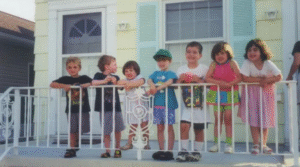Parenting is never without its challenges, but when trauma enters the picture, the emotional landscape becomes even more complex. Children affected by trauma—whether due to abuse, neglect, loss, or instability—carry emotional imprints that influence how they perceive safety, attachment, and trust. For parents or guardians, helping a child heal while establishing a nurturing environment requires more than just love and patience. It demands consistency, empathy, and a deliberate approach to fostering emotional resilience.
Trauma doesn’t just affect a child’s emotional well-being—it can influence their cognitive development, social interactions, and even physical health. The importance of creating emotionally safe spaces cannot be overstated. Such spaces act as buffers, allowing children to explore their feelings without fear of judgment or repercussion. They foster a sense of belonging, offer predictability, and lay the foundation for rebuilding trust and emotional regulation.
Educating to Heal: The Role of Social Work in Trauma-Informed Parenting
A foundational step in understanding trauma and its impact on children often begins with education, particularly in fields where social interaction and emotional guidance are core. In this context, social work plays an instrumental role in shaping approaches to trauma-informed care, especially in parenting and caregiving environments. Social workers are frequently the frontline responders for families dealing with trauma, making their training vital in implementing effective interventions.
Higher education in social work equips professionals with a deep understanding of psychological frameworks, child development, and trauma’s multifaceted effects. Among these educational paths, LCSW programs stand out by offering specialized training that emphasizes the intersection of clinical expertise and compassionate care.
These programs explore trauma not just as a singular event but as a continuous thread that can shape behavior, relationships, and even generational patterns. By understanding trauma through this lens, professionals become better equipped to guide parents in building healthier emotional environments for children.
While these programs prepare individuals for clinical roles, the knowledge gained often influences broader community efforts—support groups, parent education workshops, and school-based initiatives. The ultimate goal is to empower parents with the tools to interpret behavior not as defiance or misbehavior but as communication rooted in unhealed emotional wounds. This lens shifts parenting strategies from reactive to responsive, ultimately fostering resilience rather than reinforcing fear.
Recognizing the Emotional Vocabulary of Trauma
Children rarely articulate trauma in words. Instead, they use behavior as their primary language. A child who becomes easily frustrated, hypervigilant, withdrawn, or clingy may be communicating unmet emotional needs. Recognizing these signs is essential for parents working to rebuild their child’s sense of safety.
Parents should strive to observe behavior patterns without attaching blame or reacting harshly. For example, a child who refuses to sleep alone may not be trying to manipulate but may instead be expressing a deep fear of abandonment. By interpreting such behavior with empathy, caregivers signal that the child’s emotions are valid and worthy of attention.
Consistency in routine, tone, and discipline also plays a pivotal role. Trauma can disrupt a child’s sense of time and predictability. When caregivers maintain a structured environment with predictable responses, children begin to feel more secure. Over time, this security forms the scaffolding for resilience, allowing the child to gradually develop emotional tools that were previously missing or suppressed.
Creating Emotional Safety Through Communication
Open, honest communication fosters emotional safety, but for children recovering from trauma, that communication needs to be carefully tailored. The goal is not to force disclosures but to create an atmosphere where sharing feels safe and nonjudgmental.
One effective approach is to validate a child’s feelings rather than correcting or minimizing them. Phrases such as “It’s okay to feel upset” or “That must have been scary for you” acknowledge the child’s emotional reality. This form of reflective listening helps children name their emotions, which is the first step in managing them.
Caregivers should also be mindful of their emotional tone. Children are sensitive to stress, anger, or anxiety in their environment. Maintaining a calm and regulated demeanor—even during moments of frustration—sends a powerful message that the home is a safe and stable place.
Encouraging creativity through drawing, storytelling, or play can also offer nonverbal outlets for expression. These activities allow children to process emotions in a way that feels less direct and, therefore, safer. Over time, this creative engagement becomes a bridge to deeper communication and healing.
Boundaries and Trust: Rebuilding a Sense of Control
Children who have experienced trauma often struggle with control—either feeling powerless or trying to exert control in inappropriate ways. Establishing healthy boundaries is a crucial part of the healing process. Boundaries help define acceptable behavior while giving children a sense of structure and predictability.
It’s important that boundaries be explained, not enforced through fear or intimidation. For instance, rather than saying, “Because I said so,” a parent might say, “This rule is here to keep you safe.” This subtle shift communicates respect while reinforcing security. Over time, clear boundaries also teach children to respect others and themselves, fostering self-worth and emotional intelligence.
Care for the Caregiver: The Parent’s Emotional Health Matters Too
Parenting a traumatized child is emotionally demanding and, at times, overwhelming. It’s essential that caregivers attend to their emotional health. Guilt, frustration, and burnout are common and understandable responses. Without proper support, these emotions can compromise the caregiver’s ability to remain present and responsive.
Engaging in self-care is not a luxury but a necessity. Whether through counseling, peer support groups, or simply setting aside time for rest and reflection, caregivers must replenish their emotional reserves. Doing so not only enhances their well-being but models healthy emotional regulation for their children.
From Survival to Strength: Raising Resilient Children
Trauma may shape a child’s beginning, but it does not have to define their future. With a supportive, emotionally safe environment, children can and do build resilience. This resilience is not merely the absence of pain but the capacity to adapt, grow, and form secure relationships despite past adversity.
Parents play a central role in this transformation. Through consistent love, understanding, and structure, they offer children the tools to rebuild trust in themselves and others. Over time, children learn that it’s safe to feel, to express, and to connect.
In the end, parenting after trauma is about guiding a child from the shadows of their past into a place of light, safety, and hope. Through intentional care, emotional safety, and unwavering support, even the deepest wounds can begin to heal—and from those wounds, resilience can flourish.



